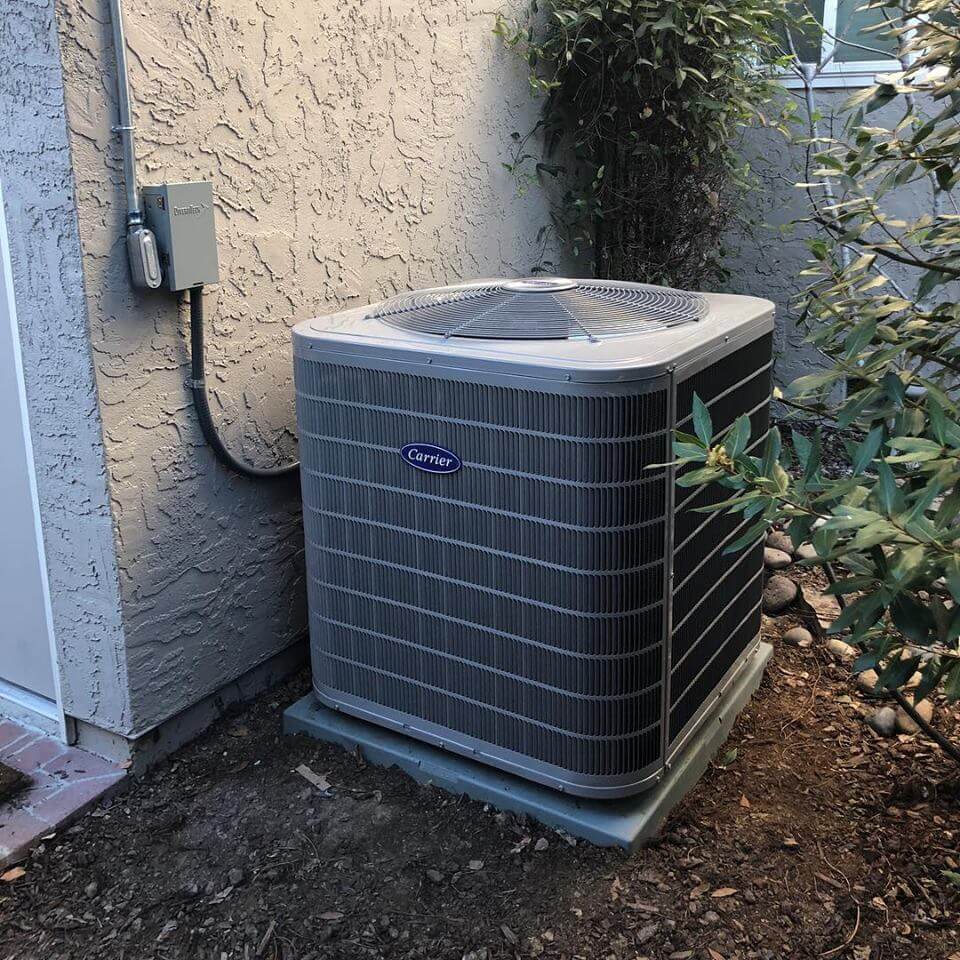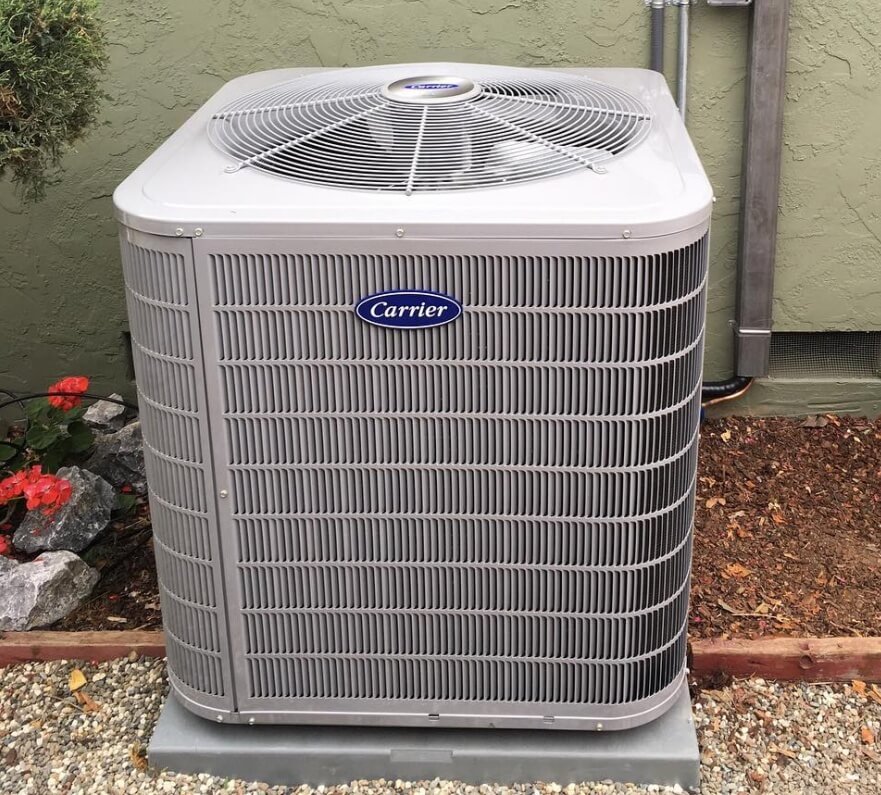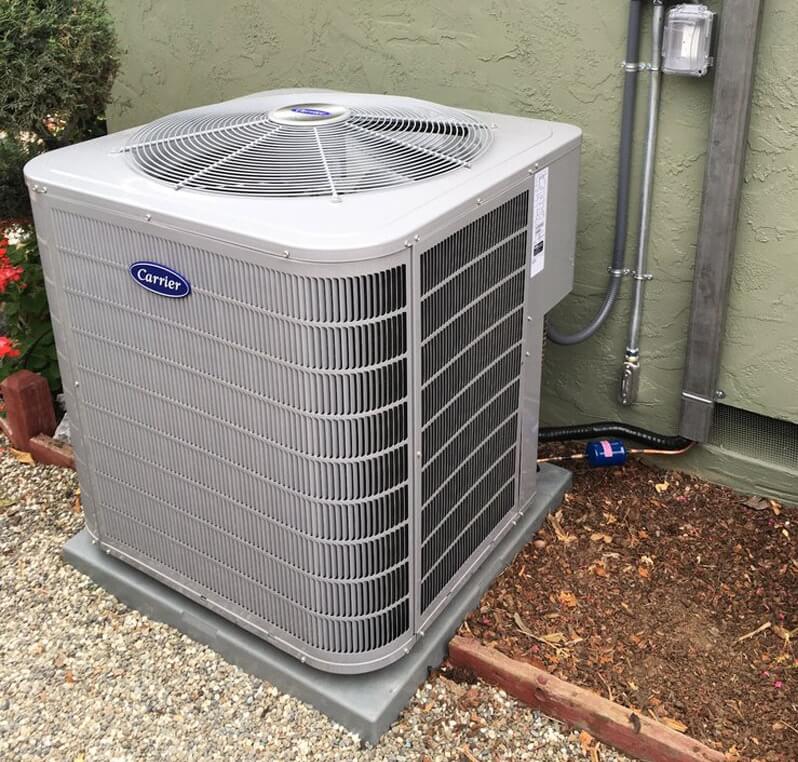Troubleshooting Central Air Conditioning Systems
Common Problems in Central Air Conditioners and How to Fix Them
As we head into the tail-end of summer, your air conditioner may be feeling the strain. So far this August, it reached 98F in San Jose and 102F in Morgan Hill. We want to offer a few tips on troubleshooting your central air conditioner, in case it is not performing.
We’re going to break down this article into sections: common issues with your air conditioner and troubleshooting, things to check, and preventative maintenance for your AC unit.
If you run into one of these common air conditioning problems, you may be able solve the issue on your own.
Quick Links to Specific AC Fixes
Common Air Conditioner Problems
Here are some of the most common AC issues and how to troubleshoot them.
The Air Conditioner Won’t Turn On
If you go to turn the air conditioner on, but nothing happens, it’s likely that you have a blow fuse or a tripped circuit breaker. Here are the most common reasons the air conditioner won’t turn on:
- Fuse is blown (you can check with a multimeter).
- Circuit breaker is tripped to off position. Click it back into the on position to fix.
- Thermostat is not set to cool, but set to off position or to heat.
- The condensation overflow tray may be full. There is usually a sensor that is activated when the condensation tray is filled with an excess of water.
- An internal switch in the air conditioner may be set to the off position.
- The external safety switch near the condenser may be set to the off position.
- Blower door on the air handler may be open.
- There may be loose wiring in the AC unit.
Air Conditioner Turns On, But Is Not Cooling Correctly
If your air conditioner is running, but it is not cooling the room properly, the airflow in the system may be blocked. It’s also possible your refrigerant is low. The refrigerant helps remove heat and moisture from the air in the room, so it can be cooled. Here are things to troubleshoot if the AC runs, but cold air is not blowing:
- Thermostat is not working properly. Check to see if it is broken or merely wired wrong.
- The condenser is blocked by plants, dirt, or debris. When dirt gets into the compressor, it can get the coils dirty, ice forms, and the unit does not cool correctly.
- Evaporator coil in the indoor unit has ice build-up. The evaporator coil removes heat from the room air, producing cool air that is circulated to the home via a fan.
- The filter may be dirty and needs to be changed.
- Outdoor compressor is faulty (you will need to call a HVAC contractor to fix this).
- – There is not enough refrigerant in the system.

Airflow Isn’t Working / Uneven Cooling
Possible causes for low or uneven airflow are dirty filters or clogged ductwork. Here’s a list of things to check if the air conditioner is running, but the airflow isn’t reaching all the parts of your house evenly:
- Check for dirty filters and replace them if necessary.
- Make sure the vents are open in the rooms you are trying to cool.
- Check the registers and compressor for blockages.
- See if there is ice build up on the evaporator coil. This can cause the air conditioner to not blow cool air.
- Inspect the air handler fan motor, to see that it is working correctly. If the fan motor is broken, you will not have airflow.
- Inspect the ductwork, and see if it is blocked, clogged, or disconnected. If your ductwork is in hard to reach places. You may also want to call a licensed HVAC contractor to do this.
Condenser Not Working
The condenser unit in a central air conditioning system sits outside the house, usually on a concrete slab. This unit has an important job, namely heat exchange. The coils in the condenser turn refrigerant gas into liquid. The refrigerant removes heat and humidity from the air. A blower fan releases the warm air to the outside, while cooled air is circulated inside the house.
Here are some items to troubleshoot if the condenser is not functioning:
- Check if the condenser is blocked by weeds, tall grass, plants, or other impediments. These can cause the condenser to become dirty or blocked.
- Look at the refrigerant coils in the condenser unit, and see if they are dirty. Dirty coils can quickly become caked with ice, meaning they won’t work properly.
Evaporator Coil Is Frozen
If the evaporator coil is frozen, this can result in warm air being circulated inside your home. The coils contain refrigerant, which absorbs heat from the air. This produces the cool air which is circulated by the air conditioning unit inside the home through the AC supply registers.
Here’s what to look for if your evaporator coil keeps icing up:
- Check for dirty air filters. This can contribute to icy evaporator coils.
- Are there obstructions around the condenser unit? If there are ways for dirt and debris to get inside the condenser unit, that dirt can accumulate on the evaporator coils, causing them to frost up.
- Are you low on refrigerant? If the coils are low on refrigerant, that can also lead to icy evaporator coils.
- Is the return air obstructed in the ductwork? If there are blockages in the ductwork, the return air to the condenser and evaporator coils will be less, which can cause ice to form on the coils.

Dirty or Leaky Ducts
Your ductwork returns air to the AC unit for cooling and conditioning. If there are leaks, the cool air goes into the walls or ceiling. If the ducts are dirty, it can cause problems elsewhere in the air conditioning system.
It’s a good idea to regularly have the air ducts cleaned and inspect for ductwork damage. (This can sometimes be caused by rodent damage or other adjacent work on the house.)
Air Conditioner Makes Too Much Noise
Sometimes, a central air conditioning unit makes unwanted noise when it is being operated. Here are things to look for.
- Pinging or popping noises. This can be caused by thermal expansion. As the temperature of the air inside the ductwork changes, the volume and shape of the metal may expand or contract. Some ways to alleviate this are: use flex duct connectors, or to find the area that is making the knocking sound then make a small dent in the ductwork using a small hammer. This makes the surface more rigid and less prone to contraction and expansion.
- Check the screws on the air grills/registers. They may be loose, and this may cause the ductwork at the register opening to expand and contract during temperature fluctuations.
Air Conditioner Won’t Turn Off
If the air conditioner does not turn off even when the room reaches the target temperature, it is usually an issue with the thermostat or the condensing unit. Here’s what to look for:
- If the thermostat is blank, and is not displaying any temperature or messages, it is probably broken and needs to be replaced. Similarly, if you turn the thermostat to hot air, and it shuts off, it’s also likely malfunctioning and needs to be replaced.
Now, if the thermostat works fine with the furnace, but not the AC, then it is probably wired wrong and not broken. You may need to call a HVAC contractor to fix it properly.
- The other possibility with the AC not turning off is the condenser unit needs to be cleaned. If the coils are dirty, they will not give off heat properly, and the unit won’t know when to shut off. Check the coils, and clean them off if necessary.
- The last thing this can be is the contacts at the outdoor run relay fusing together. This is not common, but it can happen over a long period of time, because of frequent electrical arcing at the relay. If you are checking this yourself, be sure to turn off the power to the furnace and condenser unit first, for safety. If you aren’t sure, call a licensed HVAC specialist.

Preventative Maintenance and Things to Check with Your Air Conditioner
Here are some things you can do on your own to ensure that your air conditioner continues working efficiently.
- Replace the air filters at regular intervals, to ensure dirt and debris doesn’t get into the system.
- Have a programmable thermostat, so the temperature is properly regulated.
- Have the ductwork or air ducts cleaned twice a year (spring and autumn are good times to have this done).
- Make sure there aren’t plants or foliage blocking the outdoor compressor and condenser unit.
- Check the condenser drain line every so often to make sure the water is draining properly.
Summary
Keeping your air conditioner running smoothly requires some troubleshooting from time to time. If you get stuck, or feel like you need help from a licensed HVAC contractor, reach out to our Ventwerx team and get a free estimate.